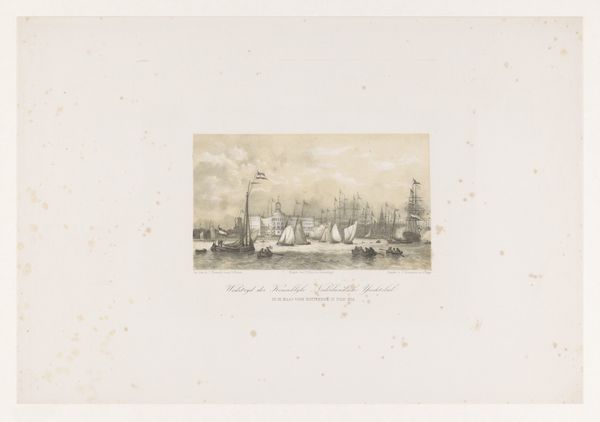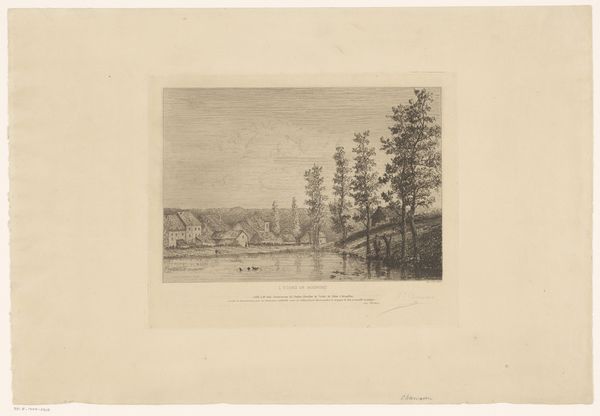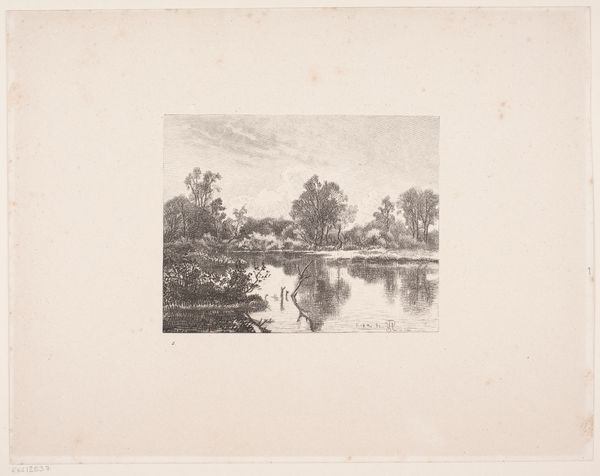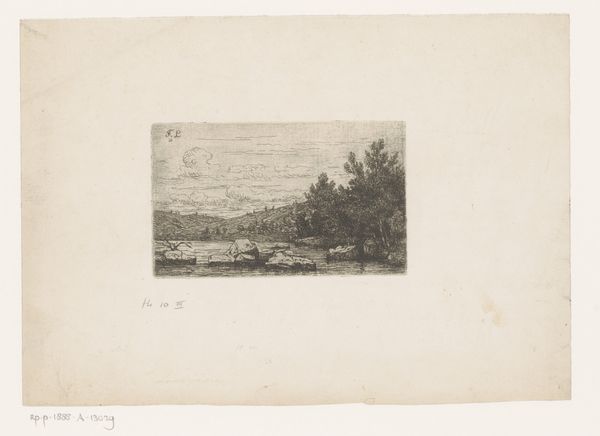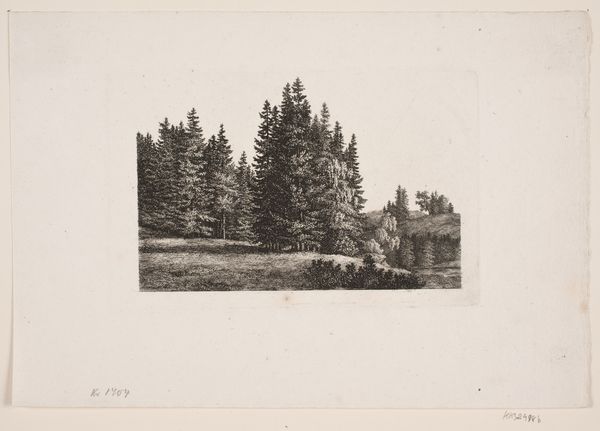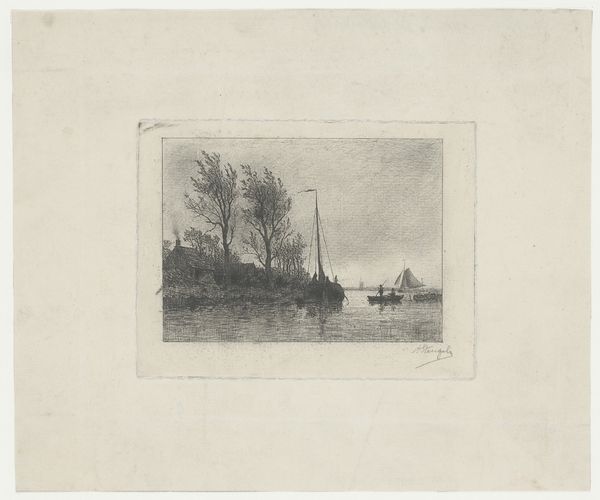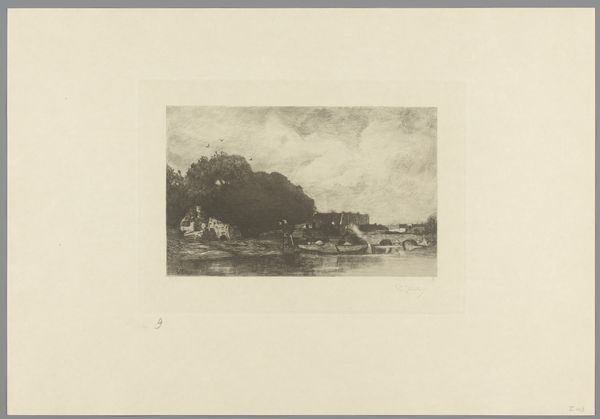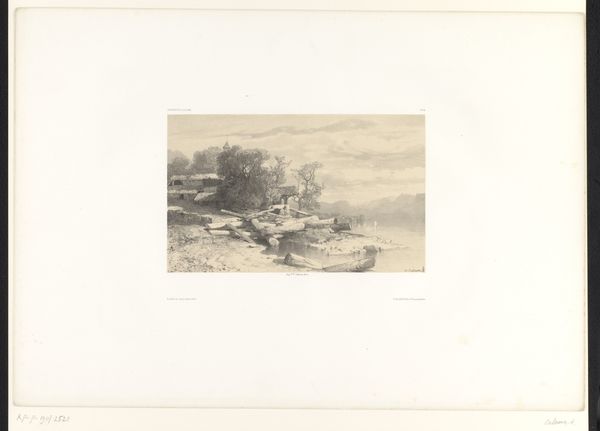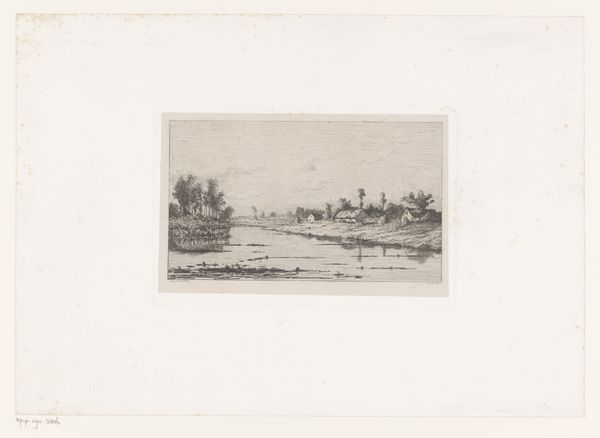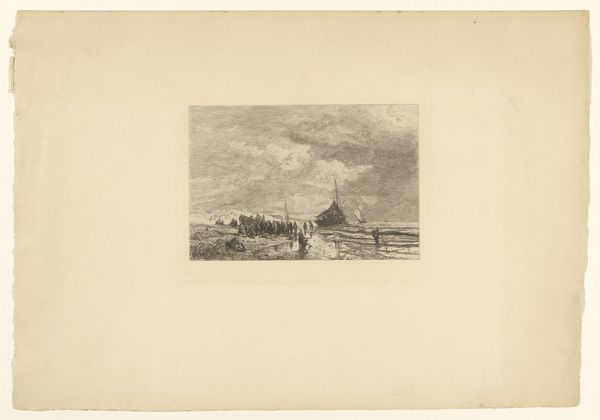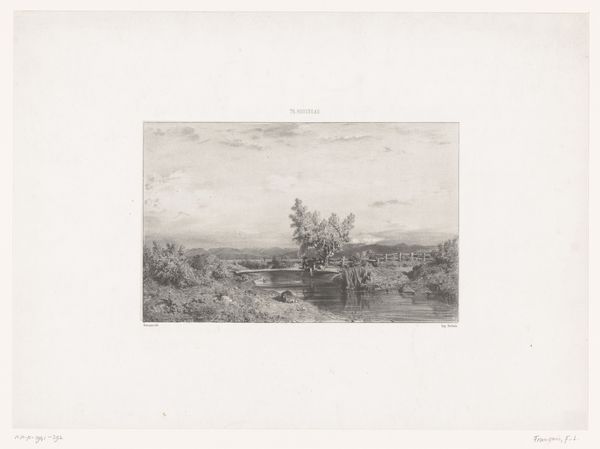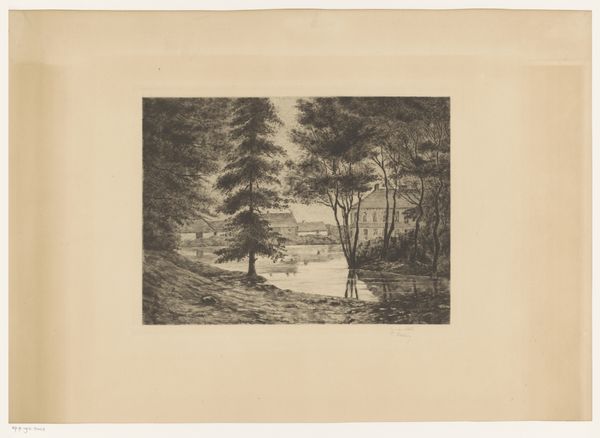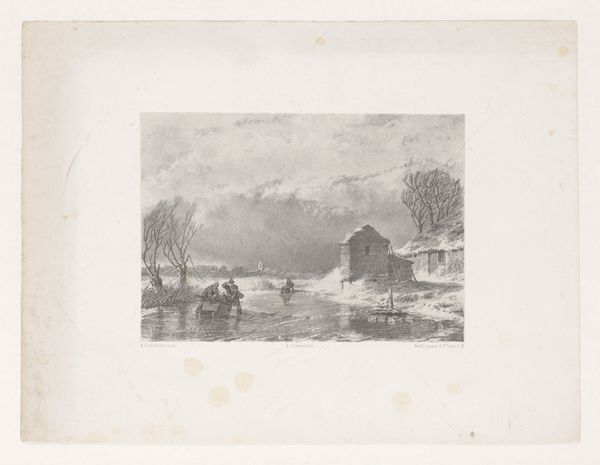
drawing, print, etching, paper
#
drawing
#
lake
#
light pencil work
#
dutch-golden-age
# print
#
etching
#
landscape
#
paper
#
cityscape
#
watercolour illustration
#
watercolor
#
realism
Dimensions: height 266 mm, width 352 mm
Copyright: Rijks Museum: Open Domain
Editor: This etching, "Dorp aan oever," created by Adolf Carel Nunnink sometime between 1842 and 1863, is wonderfully detailed. I'm really drawn to the stillness of the water and the almost dreamlike quality of the town. What do you see in this piece? Curator: What immediately strikes me is how Nunnink presents a particular vision of Dutch life and landscape during that mid-19th century period. It's not just a scene, but a carefully constructed representation. The tranquil setting, the modest homes – it subtly evokes ideas about Dutch national identity, a kind of ideal of rural simplicity and honest labor. How do you think this image might have functioned in its own time? Editor: Well, looking at how meticulously he rendered the buildings and even the reflections in the water, maybe it was trying to document a changing landscape, preserving a sense of place amidst industrial development? Curator: Precisely! These images played a significant role in shaping and reinforcing shared cultural memories and values. They shaped perceptions of Dutchness, in a period of national self-definition. Consider where such images might have been displayed or reproduced: in homes, books, perhaps even used for teaching purposes. These contexts shaped its reception. Do you find anything unexpected about this apparent vision of Dutch rural life? Editor: It feels a little too…peaceful? Considering that Europe was experiencing so many social and political upheavals at the time, this scene seems intentionally removed from all that. Curator: That's a great observation. That carefully constructed peace *is* the point. These scenes can function as a kind of escapism, a visual retreat from the anxieties of the era, and thus performed a specific function in the social landscape. Editor: I see. It’s interesting how a seemingly straightforward landscape can be so much more. I'll definitely be thinking about this "constructed peace" more deeply when I look at art. Curator: And I’ll be remembering to look closer at the surface tranquility for what societal narratives are truly beneath.
Comments
No comments
Be the first to comment and join the conversation on the ultimate creative platform.
